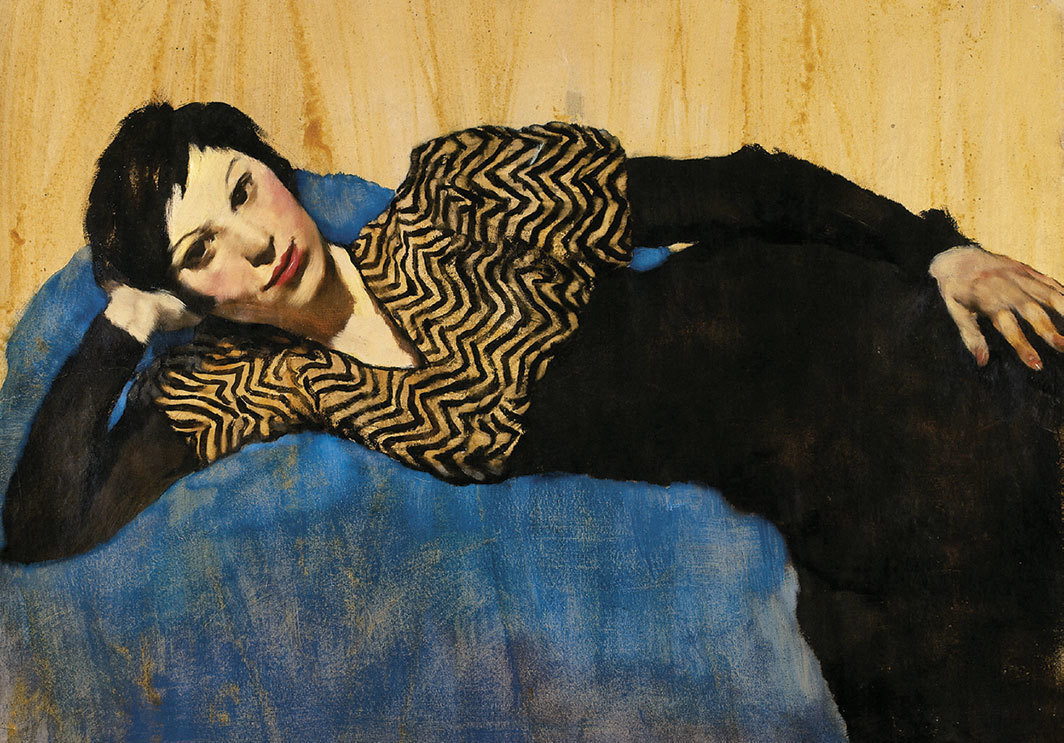
In Self-Portrait with a Cat (1928), Lotte Laserstein’s hair is short, pushed off her face. The cat holds its pose because it’s tranquilized with brandy. Laserstein’s muse, and maybe lover, Traute Rose, also had short hair and liked loose clothing. In Tennis Player (1929), Rose watches a match while sportily grasping her own racket, waiting to play. For In My Studio (1928), however, she is La Grande Odalisque or she is postcoital. Laserstein, wearing a white linen smock, pays attention to what she is painting; the painting pays attention to Rose’s body. Laserstein’s and Rose’s androgyny was not an attempt to stand out. Instead, they exemplified the “New Woman,” a term used to describe newly independent single women entering universities and the workplace with a fresh look to match. (These opportunities were, of course, class-based. Berlin’s Academy of Fine Arts, which Laserstein attended, and which had only just begun accepting women, was available exclusively to women from the middle class up.)

Laserstein’s visual style was compelling but not avant-garde: In the opening essay of a new survey, Lotte Laserstein: Face to Face, curator Alexander Eiling calls it “a conservative modernism.” Eiling argues that while Laserstein rejected Expressionism, she did not totally embrace the New Objectivity, the German anti-Expressionist movement of the early 1920s. Left-leaning New Objectivists like Otto Dix and George Grosz painted via grotesque satire because visual hyperbole felt true to the petty, vicious bourgeois hypocrisies of the time. In contrast, Laserstein’s introspective realism drew from late Impressionism, a style that showed off her academic training and also appealed to a postwar populace anxious for stability. Evening over Potsdam (1930), arguably her masterpiece, depicts a balcony dinner party attended by young cosmopolitans. The painting’s central figure––a young woman in a pale yellow dress––looks away from the viewer, but no one is looking at anyone anyway. Even the German shepherd, lounging under the table, peers away at nothing, uneasy or maybe just bored. If the seven-foot painting had been made now, we might describe it as vibey: We know many things are going wrong (Hitler’s ascent, rising anti-Semitism), but what comes across is no more than a general feeling of out-of-sync-ness.
The book avoids the temptation to cast Laserstein as a woke gay artist. Queer theory asks us to unearth a subject of study and assert her anti-normativity. But, inevitably, these subjects disappoint. They are not as radical as we’d hoped; they cannot legitimize our brand of critique. With her anxious retro-naturalism and Renaissance-smooth paint application, perhaps Laserstein’s ambivalence about the New Objectivity was a means of rejecting blunt, immediate aesthetics as the only form of “political” art. Perhaps she was just lunging at normativity. Either way, her work allows for a more fully contextualized perspective on the German interwar period via striking, ambiguous portraiture.

